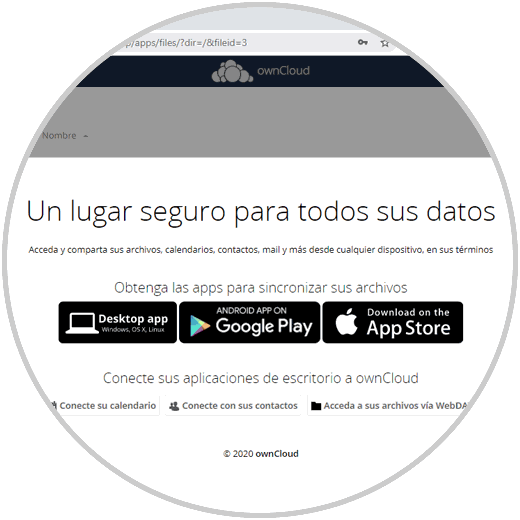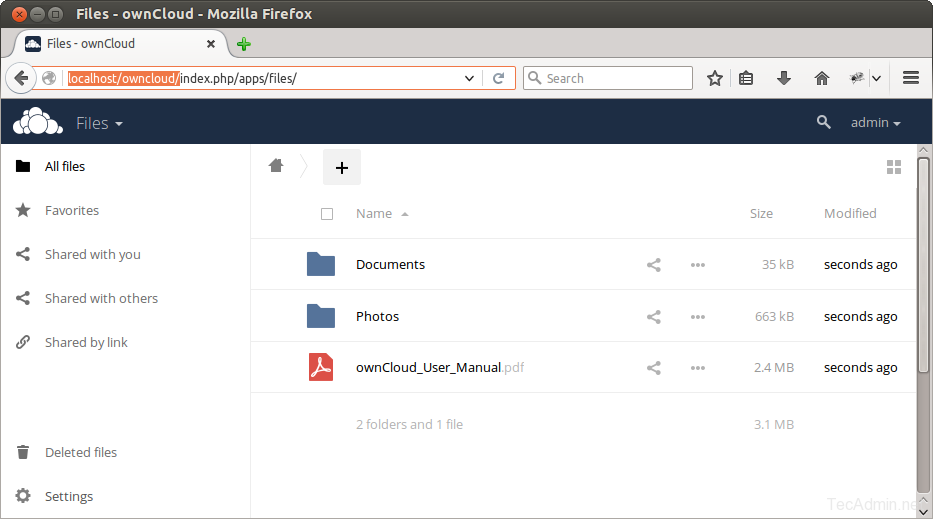
Finally, all future files created in this directory must have the same permissions: This user must have read, write and execute permissions on the directory, plus read and write permissions on all the files in the directory. The list of three options link to instructions on installing ownCloud manually (downloading the Tar or Zip File), the Web Installer and installing ownCloud using distribution specific packages.Ĭlicking the Web Installer link results in a pop-up window with instructions.īefore following these instructions, the web directory should be owned by the web server.
INSTALL OWNCLOUD INSTALL
Point your browser at and find the link to the Install page:
INSTALL OWNCLOUD HOW TO
This section covers how to install ownCloud with the web installer and using an external database MySql. In this guide we will presume that /var/If you see this you should replace it with the correct path to where you are installing ownCloud on your server. We are also aware that it is possible to install your ownCloud directory in different folders on your server depending on how it is set up. You may need to do some research or get support to find the most secure way for you to achieve this for your particular server. This process can be done in different ways to make your server more secure. Options Indexes FollowSymLinks MultiViews The most direct way is to changing None to All in the section of the VirtualHost file which is normally located here: etc/apache2/sites-enables/000-default If you are a beginner to web administration you may need help with this aspect. htaccess file of ownCloud space to be active. If using Apache, you need to have the rewrite and headers modules enabled so run:Īnd restart your server for these settings to take effect: Run these commands on the command line as root:Īpt-get install apache2 php5 php5-gd php-xml-parser php5-intlĪpt-get install php5-sqlite php5-mysql php5-pgsql smbclient curl libcurl3 php5-curl Installing on Debian / UbuntuĪs an example here are some commands to install some needed components for Ubuntu and Debian using a LAMP (Apache) setup. There is fuller detail about this aspect and details of how to install these prerequisites, if they are already active on your server, at this page of the official ownCloud documentation. The most popular database on Linux is MySQL but MariaDB or PostgreSQL are also good options. You can choose to use an external database like MySql or the more simple file based system SqLite.īy default ownCloud installs with SQLite are not recommended for large ownCloud installations.

a way of accessing your files on the server and changing their 'owner' and 'permissions' (ftp, ssh and cpanel are the most normal ways).file server (probably Apache if you are unsure but Nginx or Lighttpd are also good options).webspace as part of a hosting package or VPS (virtual private server).Here are the prerequisites for installing ownCloud. If you a running your own server with root access there is good help online for 'setting up a LAMP server'. Most hosting plans can provide an already working LAMP set up. If you are new to the process we would recommend a LAMP set up which involves (Linux, Apache, MySql and PHP). It is beyond the scope of this document to fully describe the setup of the hosting part of running a server.

INSTALL OWNCLOUD CODE
This guide covers two ways, via the web installer and by uploading the latest code via a tar/zip file to your webspace.
INSTALL OWNCLOUD MAC OS
Due to an issue with Mac OS Unicode support, installing ownCloud Server 5.0 on Mac OS is currently not supported. OwnCloud can be installed on either Linux or Windows servers. At the time of writing this manual, version 5.0.13 is the stable version of ownCloud server.


 0 kommentar(er)
0 kommentar(er)
